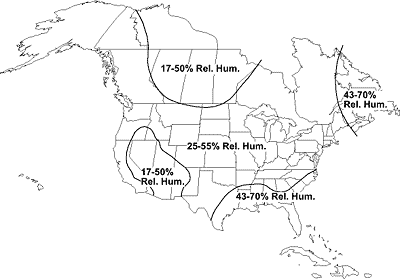Composite Panels: Particleboard and Medium-Density Fiberboard
Specified as substrate for a multitude of applications, particleboard and medium-density fiberboard are an essential material for interior architects.
This course is no longer active
Advertorial course provided by Weyerhaeuser
Installation
Even with a perfectly balanced panel, installation conditions can cause moisture unbalance that results in warp. The laminated panel should not be exposed to extreme variations in humidity during final installation.
- Changes in humidity at the installation site can result in stresses that cause warp as the entire panel equalizes to the new service environment. Panel conditioning prior to final installation improves product reliability.
- The design of laminated panel applications must also consider the service environment. Applications that expose one surface of a panel to a warm humid atmosphere and the other to a dry atmosphere will result in moisture unbalance that can cause warp. Long expanses of panels, such as display cases or walls, may warp if they do not include expansion joints, reveals or other design considerations allowing for dimensional changes resulting from seasonal variations in the environment. Panels that are butted edge-to-edge and rigidly fastened may buckle (a form of restrained warping) due to expansion stresses as moisture content increases.
|
Important Note for Designers:
Depending upon their application, composite board ratings and compatibilities may change. Manufacturers draw designers' attention to the following:
- Particleboard and MDF are for nonstructural, interior use only
- In colored particleboard or MDF, color variation from one manufacturing run to the next can occur, as well as from panel to panel.
- Some laminates and coatings applied to fire-rated composite board may change the flame spread rating.
- Standard available woodworking glues have been successfully used in lamination. However, some adhesives may have compatibility problems with the chemical system used in the manufacturing process. Any adhesive should be tested for compatibility with the chemical system in the composite product prior to full- scale gluing. Questions should be directed to the glue supplier.
- When using composite panels in wall systems, an integral
vapor barrier must be a properly installed part of the wall
in either of the following conditions:
- The wall has an exterior side
- The wall separates spaces conditioned unequally (for example, between a heated and unheated space)
|
|||||||||||||||||||||||||||||||||||||
Originally published in Architectural Record.
Originally published in December 2005










